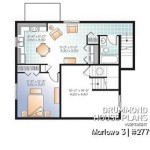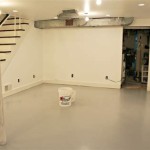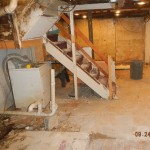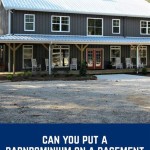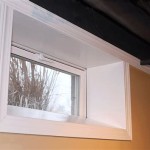Essential Aspects of Foil-Faced Insulation for Basement Walls
Insulating basement walls is crucial for maintaining a comfortable indoor environment, reducing energy costs, and preventing moisture problems. Foil-faced insulation is an excellent choice for this purpose due to its high R-value, moisture resistance, and ease of installation.
Understanding Foil-Faced Insulation
Foil-faced insulation consists of a layer of fiberglass, cellulose, or polyiso insulation with a reflective aluminum foil layer on one side. The foil acts as a radiant barrier, reflecting heat back into the house during the winter and preventing it from entering during the summer. This significantly improves the insulation's thermal performance.
Benefits of Foil-Faced Insulation
- High R-Value: R-value measures the resistance to heat flow. Foil-faced insulation typically has an R-value ranging from R-10 to R-20, providing excellent thermal insulation.
- Moisture Resistance: The foil layer acts as a vapor barrier, preventing moisture from penetrating the insulation and causing mold or mildew growth.
- Radiant Barrier: The foil reflects radiant heat, improving thermal performance and reducing energy costs.
- Ease of Installation: Foil-faced insulation is available in rolls or batts, making it easy to install on basement walls.
Types of Foil-Faced Insulation
There are two main types of foil-faced insulation:
- Kraft Paper Faced: These batts or rolls have a kraft paper backing and a foil layer on the other side.
- Polyiso Faced: These boards have a polyiso rigid foam core and a foil layer on one side.
Installation Guidelines
Proper installation is essential for optimal performance. Here are some guidelines:
- Clean and Dry Surfaces: Before installing the insulation, ensure that the basement walls are clean and dry.
- Framing: Install furring strips vertically on the walls, spaced 16-24 inches apart, to create a cavity for the insulation.
- Insulation: Unroll or place the insulation batts or boards between the furring strips, ensuring a snug fit.
- Taping: Use foil tape to seal any gaps or seams between the insulation pieces.
- Vapor Barrier: If desired, install a separate vapor barrier over the foil-faced insulation to provide additional moisture protection.
Conclusion
Foil-faced insulation is an effective and efficient way to insulate basement walls. Its high R-value, moisture resistance, radiant barrier properties, and ease of installation make it an excellent choice for improving thermal performance, reducing energy costs, and preventing moisture problems.
When choosing foil-faced insulation, consider the R-value, type (kraft paper faced or polyiso faced), and installation requirements. By following the proper installation guidelines, you can ensure that your basement walls are well-insulated and protected from moisture damage.

When To Use Foil Faced Batt Insulation Drywall Material Sales

Foil Faced Insulation A Guide To Types Benefits More

Thermaldry Basement Wall Insulation Systems

How To Insulate Your Basement S Concrete Walls The Seattle Times
Basement Blanket Insulation Building America Solution Center
Basement Wall Insulation Using Rigid Foam Board

7 Tips For Installing Foil Insulation The Right Way Data

Air Sealed Insulated Basements Building America Solution Center

Etw Foundation 2 Polyisocyanurate Insulation 2x4 Framing With Cellulose Buildingscience Com

Basement Wall Insulation Using Rigid Foam Board
See Also


